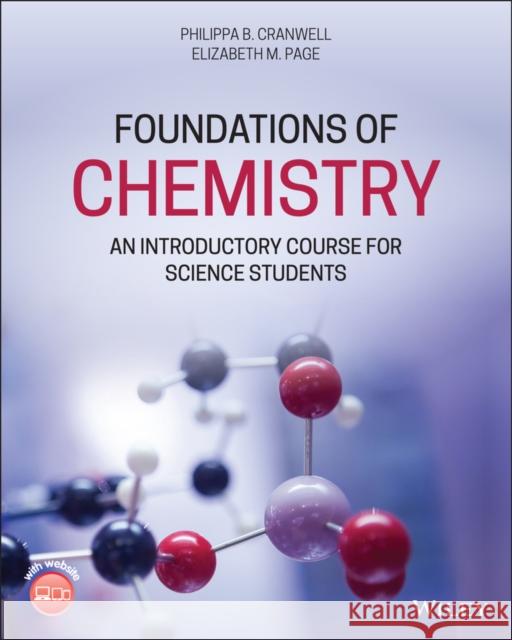Foundations of Chemistry » książka



Foundations of Chemistry
ISBN-13: 9781119513872 / Angielski / Miękka / 2021 / 592 str.
Foundations of Chemistry
ISBN-13: 9781119513872 / Angielski / Miękka / 2021 / 592 str.
(netto: 275,87 VAT: 5%)
Najniższa cena z 30 dni: 280,77 zł
ok. 22 dni roboczych.
Darmowa dostawa!
Chapter 0: Fundamentals0.1 Measurement in chemistry and science - SI units0.2 Expressing large and small numbers using scientific notation0.3 Using metric prefixes0.4 Significant figures0.5 Calculations using scientific notation0.6 Writing chemical formulae and equationsQuick Check SummaryChapter 1: Atomic Structure1.1 Atomic Structure1.2 Electronic StructureQuick Check SummaryChapter 2: Chemical Bonding2.1 Bonding2.2 Valence Shell Electron Pair Repulsion Theory (VSEPR)2.3 Polar bonds and polar molecules2.4 Intermolecular forcesQuick Check SummaryChapter 3 Masses of atoms, molecules and reacting substances3.1 Masses of atoms and molecules3.2 Amount of substance3.3 Calculations with moles3.4 Solutions; concentrations and dilutions3.5 Titration calculations3.6 Calculations with gas volumesQuick Check SummaryChapter 4: States of MatterIntroduction4.1 Solids4.2 Liquids4.3 GasesQuick Check SummaryChapter 5 Oxidation-reduction (redox) reactions5.1 Redox Reactions5.2 Disproportionation Reactions5.3 Redox titrationsQuick Check SummaryChapter 6 Energy, Enthalpy and Entropy6.1 Enthalpy Changes6.2 Entropy and Gibbs Free EnergyQuick Check SummaryChapter 7 Chemical Equilibrium and Acid-Base EquilibriaIntroduction7.1 Equilibria and reversible reactions7.2 Acid - base equilibriaQuick Check SummaryChapter 8 Chemical Kinetics - The Rates of Chemical ReactionsIntroduction8.1 The rate of reaction8.2 Determining the rate of a chemical reaction8.3 The rate expression8.4 The half-life of a reaction8.5 Reaction mechanisms8.6 Effect of temperature on reaction rateQuick Check SummaryChapter 9 ElectrochemistryIntroduction9.1 Redox reactions - a reminder9.2 Redox reactions and electrochemical cells9.3 Using redox reactions - Galvanic cells9.4 Using redox reactions - Electrolytic cellsQuick Check SummaryChapter 10: Group trends and periodicity10.1 The Periodic Table: Periods, Groups and Periodicity10.2 Trends in properties of elements in the same vertical group of the periodic table10.3 Trends in properties of elements in the same horizontal periodQuick Check SummaryChapter 11: The Periodic Table - chemistry of Groups 1, 2, 7 and transition elementsIntroduction11.1 Group 1 - The Alkali Metals11.2 Group 2 - The Alkaline Earth Metals11.3 Group 7 (17) The Halogens11.4 The Transition ElementsQuick Check SummaryChapter 12: Core Concepts and Ideas Within Organic Chemistry12.1 Types of molecular formula12.2 Nomenclature of simple alkanes12.3 Isomers12.4 Drawing Reaction Mechanisms12.5 Types of reactionQuick Check SummaryChapter 13: Alkanes, Alkenes and Alkynes13.1 Alkanes: an outline13.2 Alkenes: an outline13.3 Alkynes: an outlineQuick Check SummaryChapter 14: Reactivity of Selected Homologous Series14.1 Alcohols14.2 Aldehydes and ketones14.3 Carboxylic acids14.4 Esters14.5 Amides14.6 Amines14.7 NitrilesQuick Check SummaryChapter 15: The Chemistry of Aromatic Compounds15.1 Benzene15.2 Reactions of benzene with electrophiles15.3 AnilineQuick Check SummaryChapter 16: Substitution and elimination reactions16.1 Substitution reactions16.2 Elimination reactions16.3 Comparison of substitution and elimination reactionsQuick Check SummaryChapter 17: Bringing it all together17.1 Functional group interconversion17.2 Bringing it all togetherChapter 18: Polymerisation18.1 PolymerisationQuick Check SummaryChapter 19: Spectroscopy19.1 Mass Spectrometry19.2 Infrared Spectroscopy (IR)19.3 Nuclear Magnetic Resonance Spectroscopy (NMR)19.4 Bringing it all togetherQuick Check Summary
Philippa B. Cranwell is Associate Professor of Organic Chemistry at the University of Reading. She has extensive experience of teaching students chemistry, ranging from A-level to Foundation level and higher. She has co-authored several texts relating to both practical and theoretical organic chemistry. She actively undertakes research in the field of chemistry education and regularly publishes her work. She was awarded a University of Reading Teaching Fellowship in 2016 for her contribution to teaching and learning.Elizabeth M. Page is Emeritus Professor of Chemistry Education at the University of Reading. She has over 30 years experience of teaching chemistry at Foundation level and higher. She is author of several text books for life-sciences and chemistry students. Elizabeth has been an examiner for A level chemistry and helped in the design of the revised A level specifications in chemistry. During her time at Reading she established a strong network of chemistry teachers, providing a forum for discussions and guidance in teaching GCSE and A level chemistry. Elizabeth was awarded the Royal Society of Chemistry Education prize for her work with chemistry teachers and is a National and University of Reading Teaching Fellow.
1997-2024 DolnySlask.com Agencja Internetowa
KrainaKsiazek.PL - Księgarnia Internetowa









